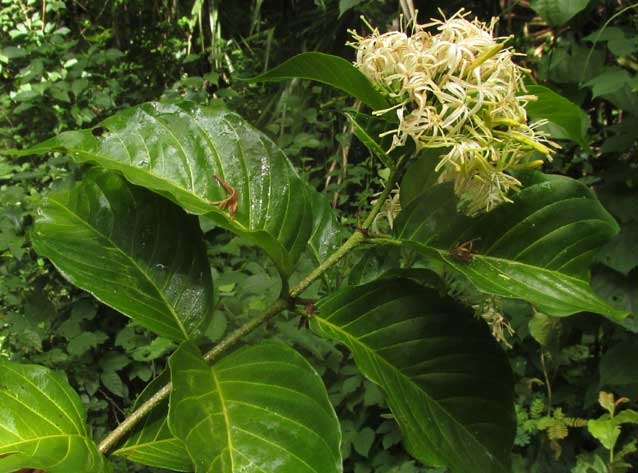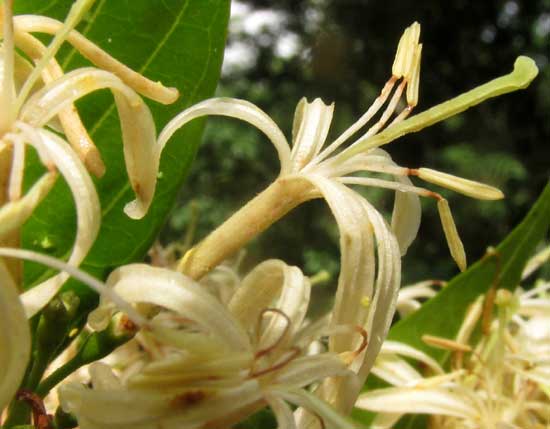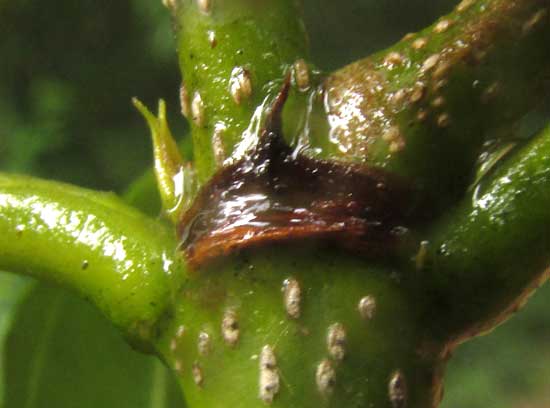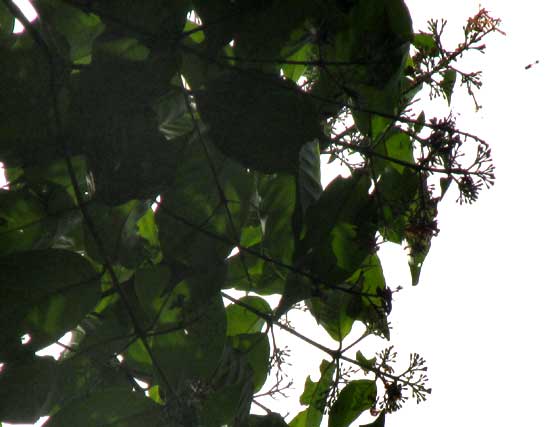Excerpts from Jim Conrad's
Naturalist Newsletter
from the August 27, 2017 Newsletter issued from Rancho Regenesis in the woods ±4kms west of Ek Balam Ruins; elevation ~40m (~130 ft), N20.876°, W88.170°; north-central Yucatán, MÉXICO
EXOSTEMA FLOWERING

One of the fallen branches on the trail bore large, glossy, opposite leaves like those of a Coffee bush, and a snowball-like cluster of fair-sized, white flowers in a terminal panicle, shown above. The blossoms had some character, as shown below:

First, notice that the slender style pointing toward the image's top, right thickens and grows green toward the knobby stigma at its tip. The corolla's lobes are unusually long and strongly curved back, and notice at the flower's very bottom how the green calyx bulges below the sepals. That indicates an inferior ovary -- an overy with the corolla and stamens arising at its top instead of at its base.
Opposite leaves looking like those on a Coffee bush and flowers with inferior ovaries... In the American tropics this combination of features usually but not always announces a member of the big Coffee or Madder Family, the Rubiaceae. To confirm the matter, look for conspicuous stipules connecting the tops of the opposite leaves' petioles; the branch had them. A stipule very typical of the Rubiaceae, brown and ready to fall off leaving just a stipular scar, is shown below:

Realizing that we had a "Rube," I remembered having seen flowers very similar to those in our pictures on a bush or small tree on the Yucatan's northern coast, near Río Lagartos. That had been Exostema caribaeum, whose page is at www.backyardnature.net/yucatan/exostema.htm
So, here we'd found a second Yucatan species in the genus Exostema. It's EXOSTEMA MEXICANUM, distributed from central Mexico into Central America. Despite its handsomeness, it seems to be an obscure species with little information on the Internet about it.
Certainly I'd not have noticed it if the wind hadn't left a broken-off branch lying on the trail, even though twenty feet up, branches exposed to sunlight were generously flowering and buzzing with pollinators, a situation hinted at in the photo below:
